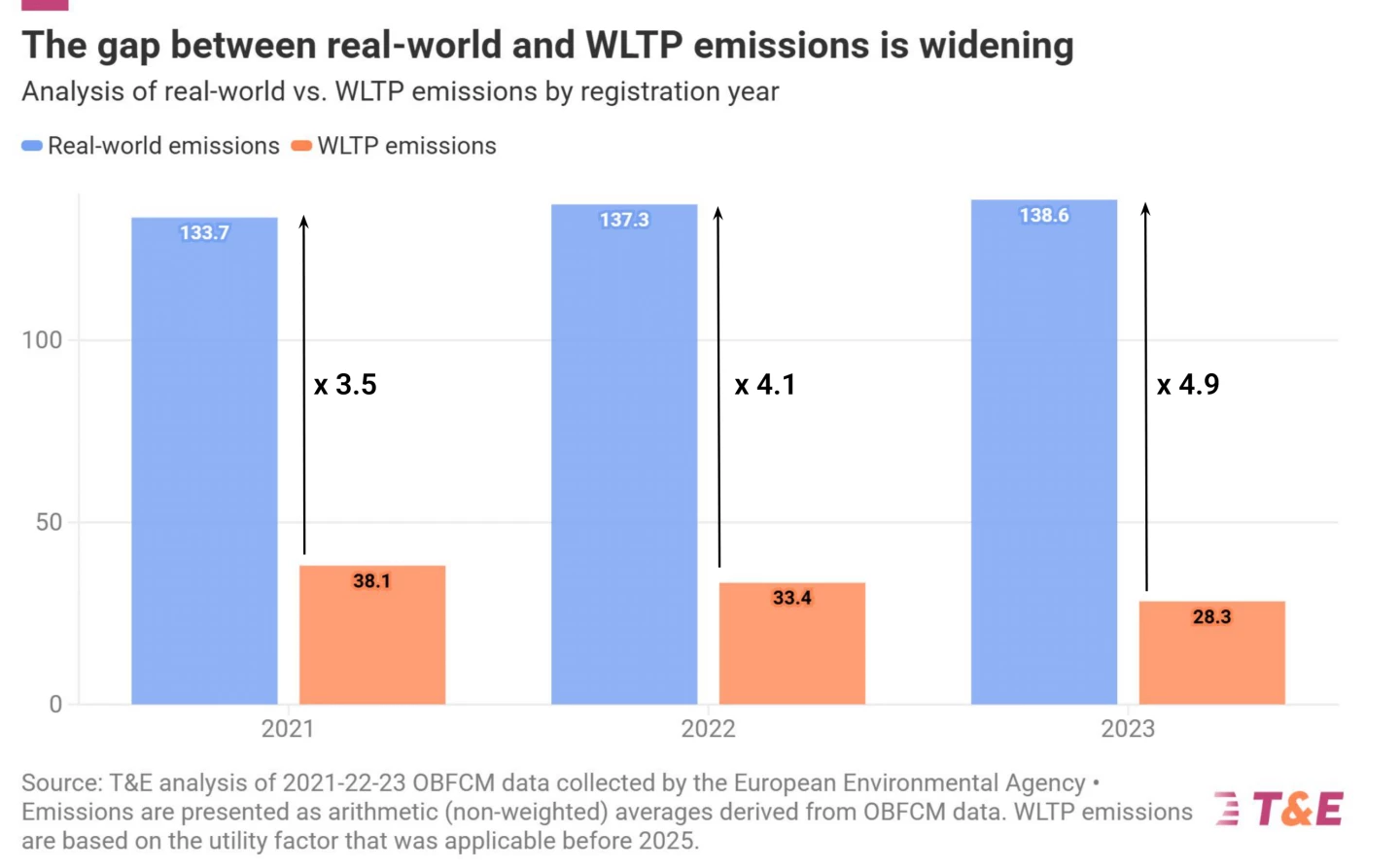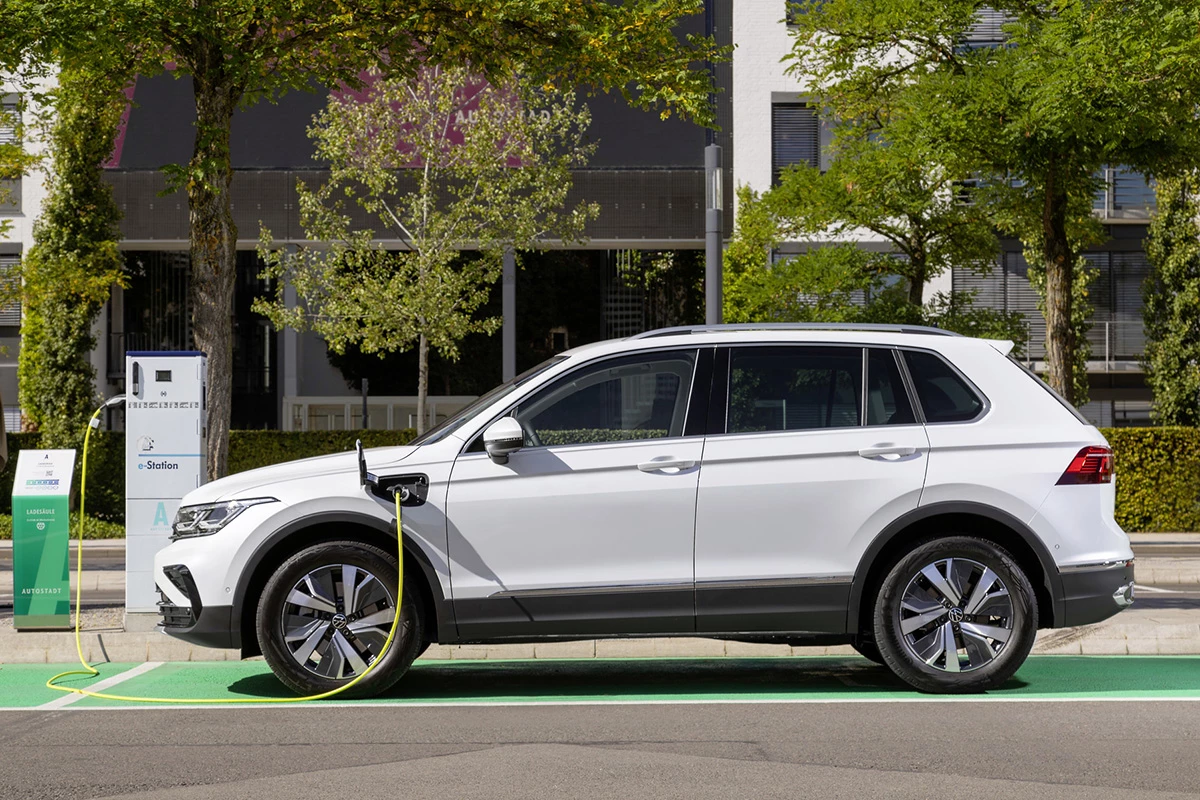A climate-focused report out of Europe throws serious shade at plug-in hybrid electric (PHEV) cars, pointing out that they emit nearly as much carbon dioxide emissions as combustion engine-powered vehicles. In fact, it highlights how real-world emissions from supposedly greener PHEVs has increased over the years above officially recorded figures to nearly five times. Yikes!
The findings come from the European Federation for Transport and Environment (T&E), a clutch of non-government organizations focused on sustainable transport policy across the continent. The report has been published ahead of a review of automotive CO2 emission standards, which would see Europe continue to sell plug-in hybrid electric vehicles beyond 2035, when they're set to be phased out in order to meet EU climate targets.
That's bad news for automakers and people who were hoping to reduce their carbon footprint somewhat by opting for a plug-in hybrid – a type of car that can be charged up to do short commutes about 50 miles (80 km) relying just on the battery, while the gas engine takes over for longer trips.
T&E explains that this unraveling is because of a major discrepancy in PHEV emissions figures from Worldwide Harmonized Light Vehicles Test Procedure (WLTP) figures – a global standard for determining the levels of pollutants from cars – and real-world data that the collective gathered from more than 800,000 PHEVs registered between 2021 and 2023.

For PHEV models registered in 2023, the real-world CO₂ emissions were nearly five times as high as the official emissions. This gap has grown from a factor of 3.5 times in 2021 to 4.9 times in 2023, based on data from on-board fuel consumption meters (OBFCM). And that's just 19% less emissions than you'd see with an internal combustion engine (ICE) vehicle, compared to claimed WLTP differences of 75% less emissions.
According to T&E, the disparity between official (WLTP) and real-world PHEV emissions comes down to flawed assumptions regarding driving mode usage, and design limitations that force a car's combustion engine to engage frequently. Essentially, WLTP relies on fixed, overly optimistic assumptions about driver behavior, and how that plays out in terms of the share of driving done in emission-free electric mode.
There's also the question of Utility Factor (UF) overestimation: UF refers to the proportion of total driving that is powered by electricity. T&E says that official UF calculations assume that 84% of driving was all-electric over 2021–2023, while real-world data shows this share to be only 27%.
The WLTP is also said to have significantly underestimated the emissions that occur even when the PHEV is operating in what's known as Charge-Depleting mode (CD), where the car primarily runs on electricity from the battery, and gets a power boost from the ICE for accelerating quickly or climbing a slope. The report says the ICE assist causes emissions nearly nine times as high as official estimates.
Vehicle design also plays a role in making PHEVs suck for the environment. They can be heavier, and have low electric motor-to-engine power ratios – which combine to result in elevated emissions in Charge Sustaining mode (where the vehicle is mainly propelled by the ICE and assisted by the electric motor; recuperated energy keeps the battery at a steady rate of charge).

What's more, the lack of convenient charging infrastructure along with the lack of fast-charging capabilities on most PHEVs mean that people simply aren't charging their cars all that often. Instead, they're mostly relying on the cars' large fuel tanks.
Those are fighting words in the hybrid world. T&E also estimates things aren't going to improve much with PHEVs on these fronts in the years to come, and all the extra ICE driving that hasn't been accounted for is actually costing drivers more in fuel costs than they expect when they buy a plug-in hybrid.
It remains to be seen if this report will shake policymakers in Europe awake, and if that'll have knock-on effects on PHEV sales in the region and elsewhere around the world over the coming years. Until then, the authors of the report have some suggestions to help bolster EU emission standards and help the transition to zero-emission mobility along.
The big one is to maintain the 2030–2035 car CO2 targets in the upcoming regulatory review, and to disallow any derogation for hybrids after 2035. The report notes this is critical to prevent significant climate-harmful emissions.
It also suggests tackling UF correction errors that may skew data in favor of gas-guzzling PHEVs over the next few years. Lastly, building policies and incentives to increase the adoption of all-electric cars could help skip the PHEV circus altogether.
The full report has a lot more details to wrap your head around, and it's pretty readable. Find it on T&E's site.





